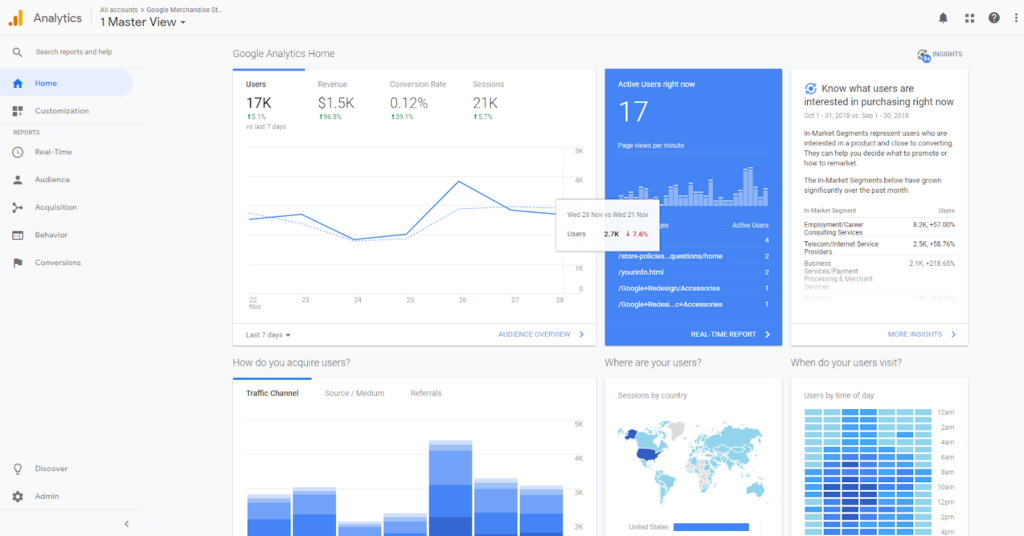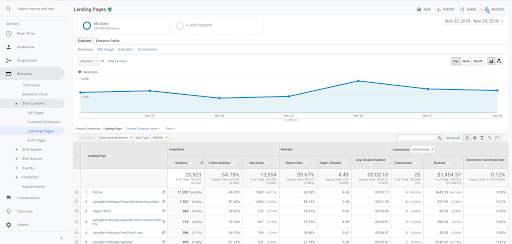
Did you know that even marketing rockstars praise Google Analytics? This free program from Google packs a punch when it comes to tracking website performance. One of the most important tools is the landing page report Google Analytics.
In this article, we focus on using Google Analytics to assess the performance of landing pages. In Google’s perspective, a landing page is the first page users get to on your site.
Prerequisites: Have Google Analytics
If you do not yet have a Google Analytics account, all you need is to have a Google Account. Then, head over to google.com/analytics to get a tracking code for your site.
Now:
You need to place the Google Analytics code in every page of your site that you want to track. If you are using a CMS like WordPress, this is easy to accomplish as you can use a plugin to set up Analytics.
The Google Analytics Dashboard
The main dashboard in Google Analytics looks like the image below:
On the dashboard, you will find a snapshot of your site’s activity. You will see the number of visitors, new vs. returning visitors, unique visitors, average time on site, and average pages per visit among others.
The Landing Pages Report
For more information on your landing pages, simply click on the “Content†tab in the left column and click on “Landing Pages.†This report shows you the pages that act as your site’s entrance pages.
Some of the metrics you will see in this report include the average time spent on the site, number of pages per visit, the percentage of new visitors, as well as the bounce rate.Â
What is the bounce rate, you wonder?
It simply refers to the visitors who leave your site after they arrive, without visiting any other page. A high bounce rate indicates that the traffic sources or keywords used on the site are not relevant for your visitors.
So when visitors land on the page, they realize that they will not find what they are looking for, and they leave.
Handling High Bounce Rates
If you want to reduce the bounce rate on your site, ask yourself the following questions:
Are the keywords you use relevant at driving people to your site? If you are using paid ads, you might want to change the key terms you are bidding. When it comes to organic search, make sure content is relevant.
Is your website’s design practical, and does it utilize principles of the logical eye path? If you arrange the information on the website in a way that confuses your readers, more than likely, they will bounce.
Does the page showcase a pressing problem, clear solution and call to action? If your landing page leaves too much for the visitor to guess, you can bet that you will receive high bounce rates.
Start Using the Landing Page Report Google AnalyticsÂ
When you have the data from Landing Page report Google Analytics, you can tune your landing pages in such a way that they meet the needs of your visitors and have improved performance.
Geeks of Digital is an analytics-driven online marketing and content production agency. We are experts when it comes to Google Analytics. Get in touch so we can use Analytics to take your business to the next level.



0 comments